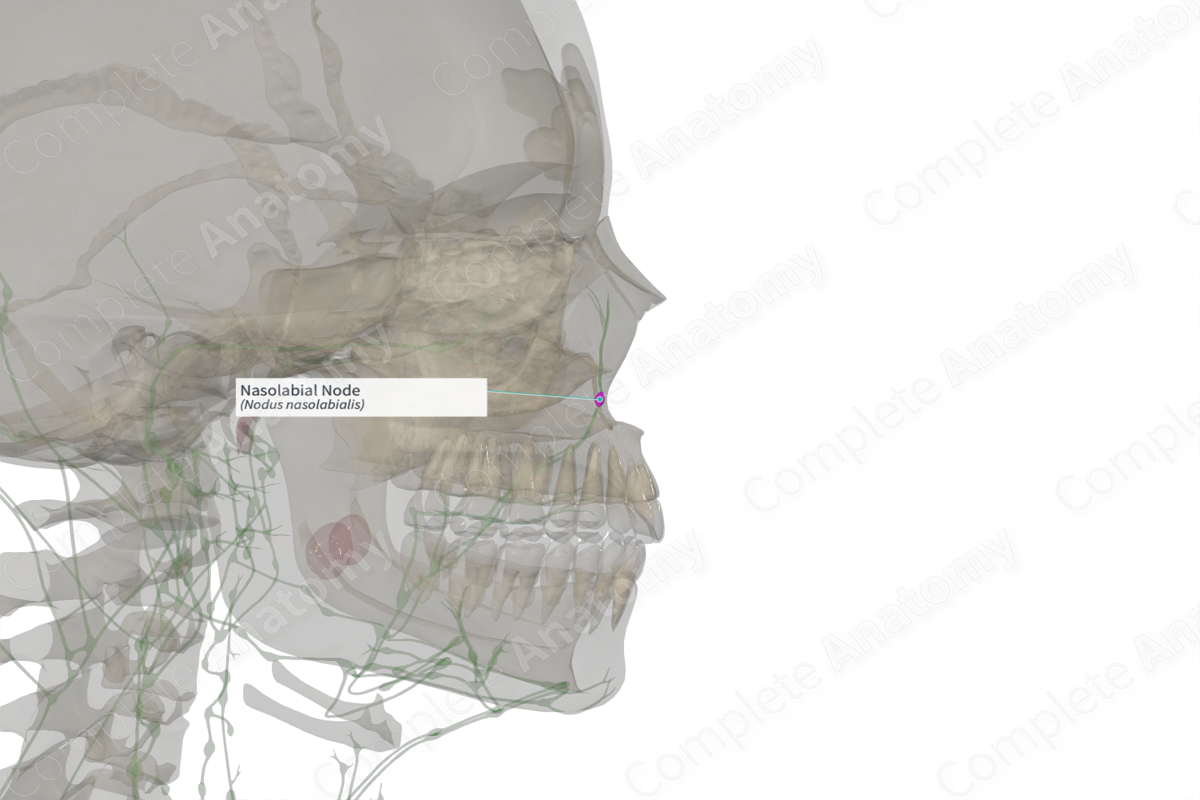
Quick Facts
Location: In the upper half of the nasolabial sulcus, intercalated with the lymph vessels of the nose or eyelid.
Drainage: Skin and subcutaneous tissue of the medial part of the eyelids, node and nasolabial fold.
Direction of Flow: Buccinator and mandibular facial nodes > submandibular nodes > jugulodigastric nodes > internal jugular nodes > supraclavicular nodes > jugular trunk > thoracic duct (left) or right lymphatic duct.
Related parts of the anatomy
Description
The nasolabial nodes are inconsistent, however, when present, there is usually one small node on either the facial artery or vein, in the nasolabial fold, or overlying the canine fossa (Bou-Assaly, 2016).
The drainage territory of these nodes is shared with a number of other nodes and is not well defined due to their inconsistency.
References
Bou-Assaly, W. (2016) 'The forgotten lymph nodes: Review of the superficial head and neck lymphatic system', Journal of Radiology and Imaging, 1(1), pp. 9-13.



